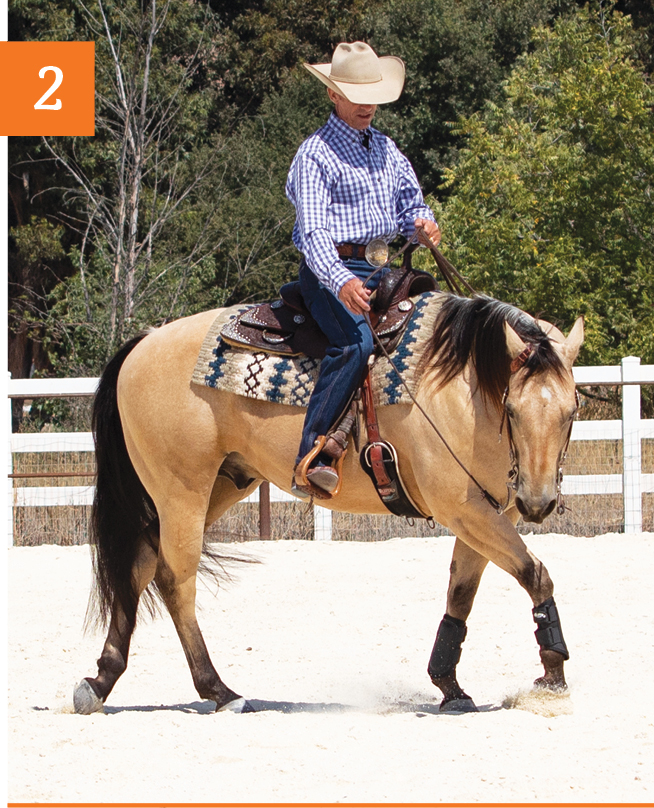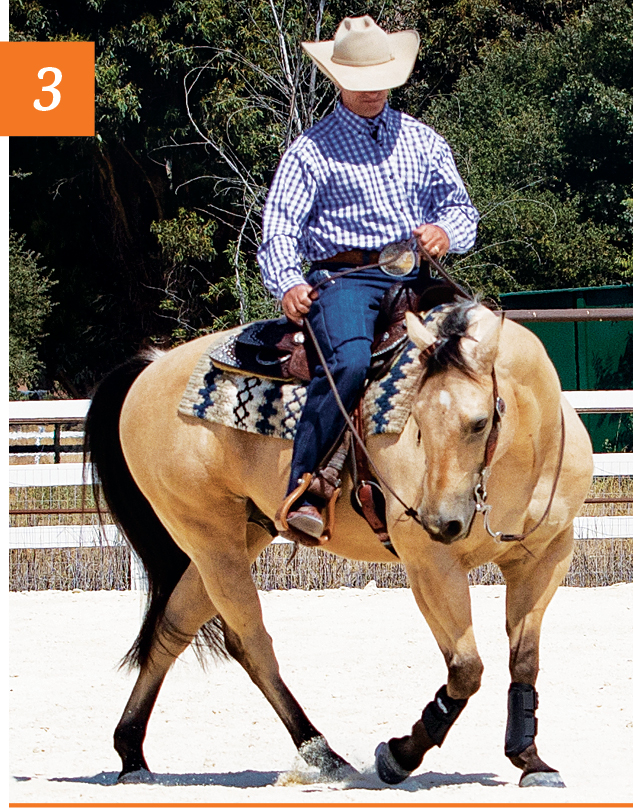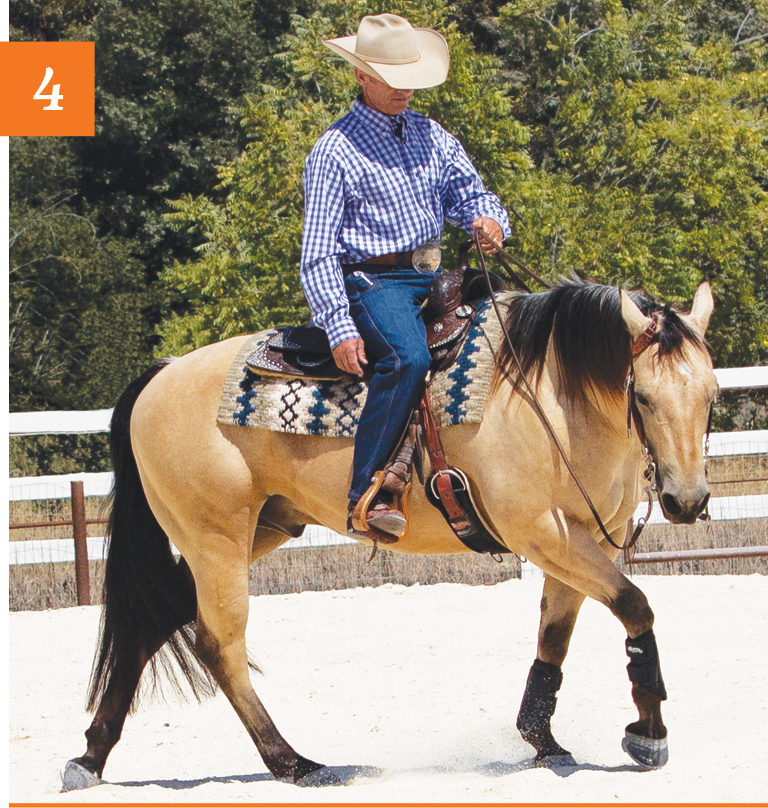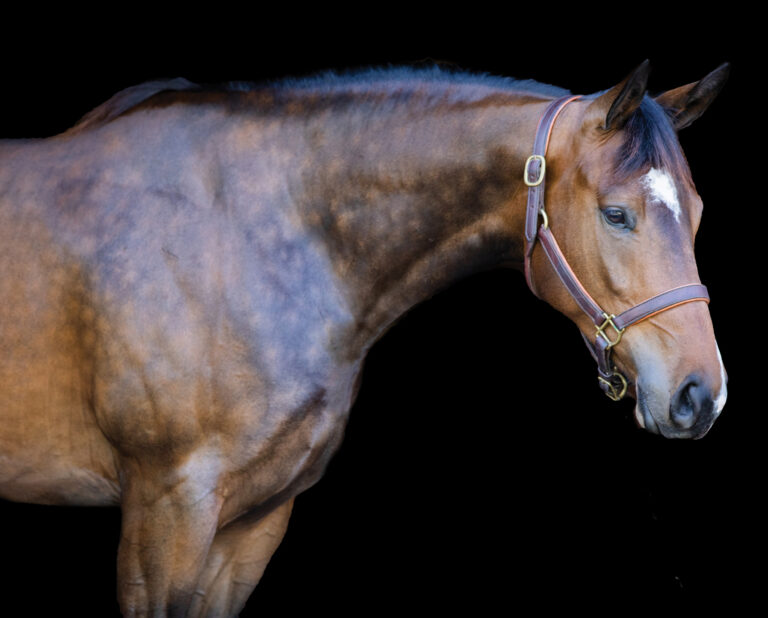This Dropped Shoulder article is sponsored by Warwick Schiller.
Does your horse drop his inside shoulder when you cue him to turn or start a circle? It’s a common evasion. It enables your horse to “sort of” respond to your rein cue without having to improve how he’s carrying himself.
[MORE WITH WARWICK: DISTRACTED HORSE]
The reason you don’t want this is because a stiff body and dropped shoulder means your horse has shifted weight onto his front end. Think how many times you steer your horse each time you ride. If he drops his shoulder and shifts his weight forward each time, that means he’s practicing the wrong body position dozens of times every ride.
What you want instead is for your horse to improve his body position and carriage every time you steer him. This happens when he uses his abdominal muscles to hold his shoulders up, simultaneously stepping well underneath himself with his hind legs and bending his body on the arc of the turn or circle. In this way, every time you steer, your horse is practicing carrying himself a little bit better instead of a little bit worse.
Consider what accomplished dressage riders do. They’re constantly asking for some sort of transition or movement that causes their horse to improve how he carries his body. As Western riders, we tend not to do those kinds of transitions as much. So our best way of achieving the same goal is to make sure, every time we steer, that we get a change for the better and not a change for the worse.
I’ll give you an exercise that will enable you to do this. You’ll use an inside direct rein to increase your horse’s bend. Encouraging him to keep his shoulder up and step well underneath with his hind leg.
Here we go.
1. Identify the Problem

This photo shows that although my horse is responding to my cue to begin a turn to his right, he’s stiff through his body rather than bending along the arc of the turn. He’s also dropping his inside (right) shoulder a bit, which means he isn’t using his abdominal muscles to hold his front end up. He’s therefore not connected through his middle, resulting in a shift of some of his weight onto his forehand.
In other words, he’s doing everything we don’t want!
[MORE WITH WARWICK: OVERBRIDLED HORSE]
2. Start the Correction

To begin the correction, reach down with your inside hand (here, my right hand) and use direct-rein pressure (something your horse understands well) to tip your horse’s nose to the inside of the turn or circle. That direct-rein pressure is requiring my horse to bend with the direction of his turn.
3. Carry It Through

Keep going. As need be, open your inside rein as I am here to lead your horse around the circle. I’ll keep asking like this and won’t release until he’s “straight”—which in this case means his body is bent on the arc of the circle and he’s “following his nose.” I also use my legs if need be to shape his body, pressing at the girth with my inside leg to help create bend.
Meanwhile, my outside (indirect, left) rein hasn’t changed—it remains as a cue for my horse to turn to the right. I don’t increase or decrease my pull on that rein throughout this maneuver.
4. Compare the Result!

This photo shows my horse after I’ve made this correction a few times. Now when the outside (left) rein touches his neck, my horse uses his abdominal muscles to hold his shoulders up and bend through the turn. Compare this photo to Photo 1, and you’ll see the bend through his body, the raised front end, and the hind leg reaching farther up from behind.
This is the body carriage you want! By staying mindful every time you steer your horse, you’ll be continuously improving or maintaining this position, rather than letting his carriage deteriorate over time.
[MORE WITH WARWICK: BOOST SELF-CARRIAGE]







